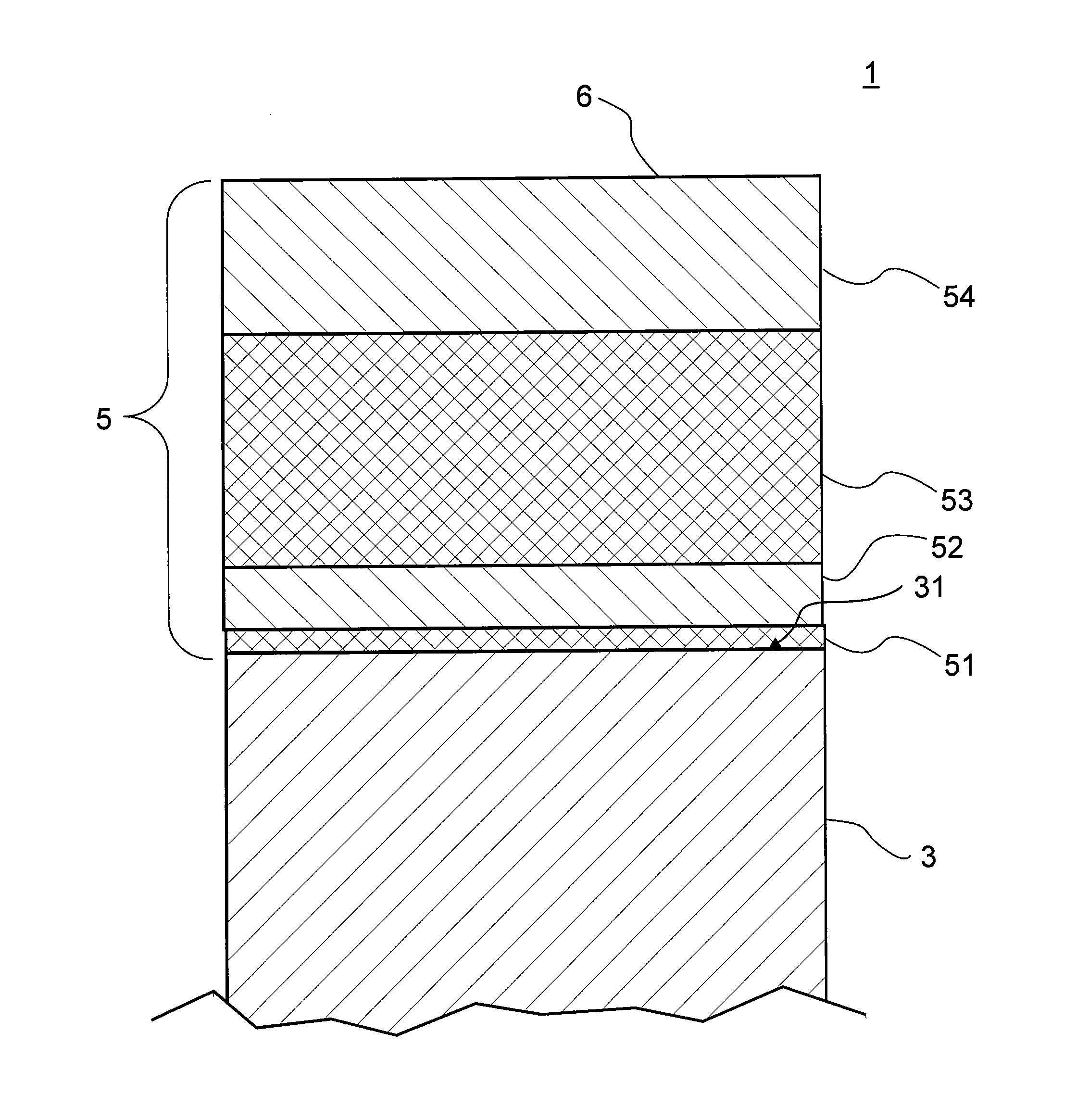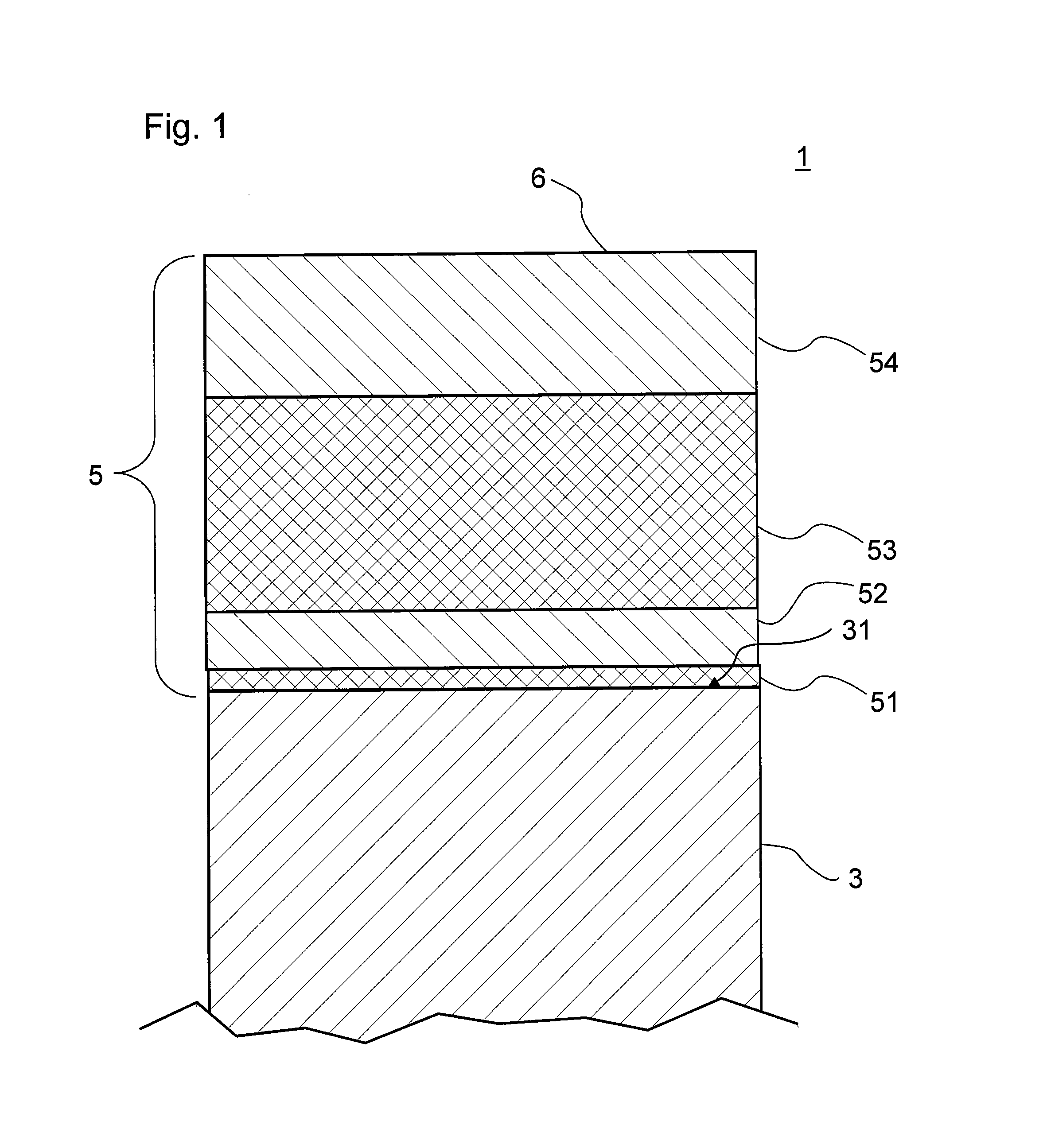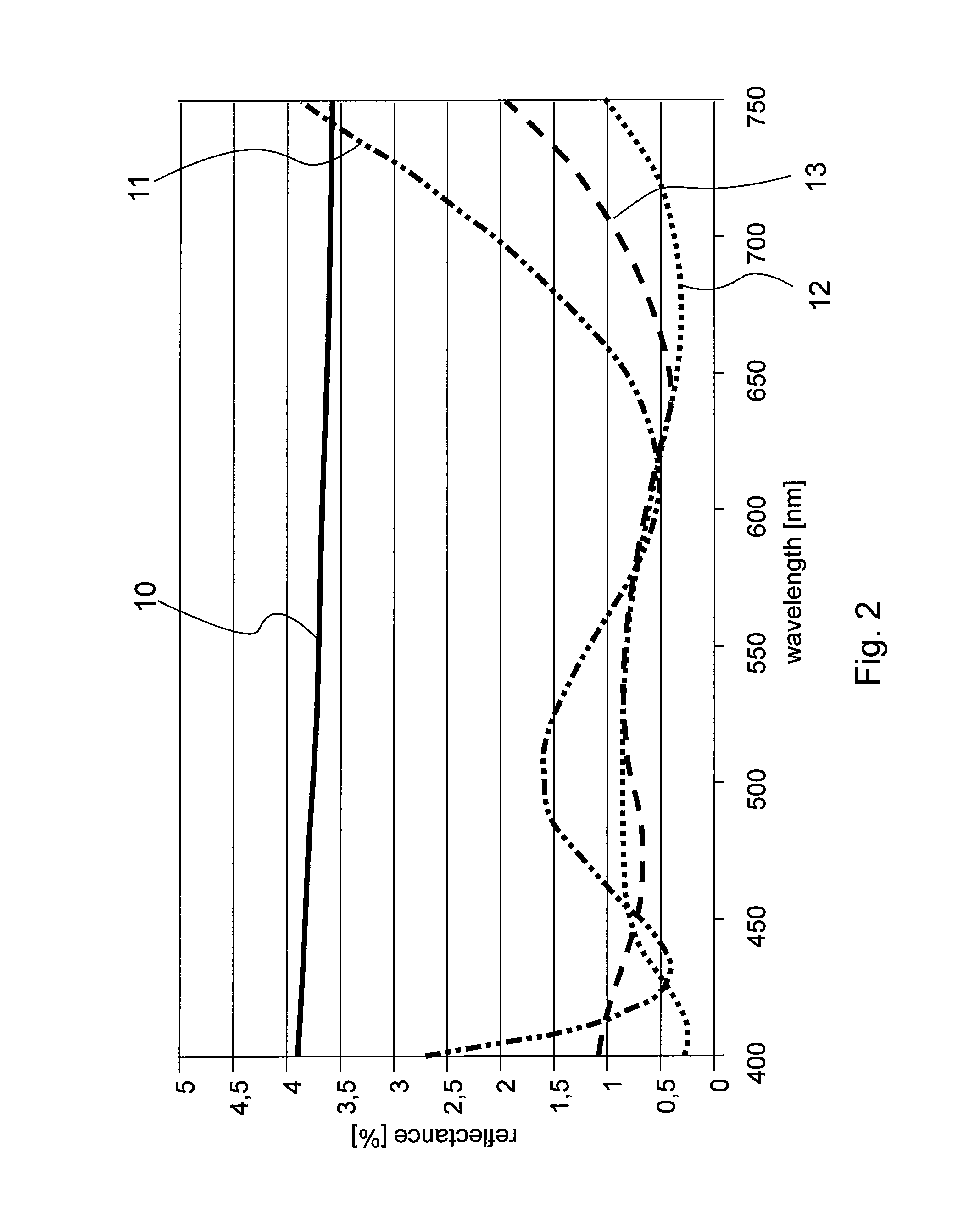Substrate with antireflection coating and method for producing same
a technology of anti-reflection coating and substrate, which is applied in the direction of vacuum evaporation coating, optical elements, instruments, etc., can solve the problems of high wear stress, ablation of the coating, and long scratches in the coating, so as to reduce the anti-reflection effect, reduce the method, and ensure the effect of durability
- Summary
- Abstract
- Description
- Claims
- Application Information
AI Technical Summary
Benefits of technology
Problems solved by technology
Method used
Image
Examples
Embodiment Construction
[0047]The example of a product 1 with a coated substrate 3 as shown in FIG. 1 is based on an antireflection coating 5 comprising a total of four layers. Typically, substrate 3 is pane- or plate-shaped, and antireflection coating 5 is deposited on one side 31 of substrate 3. In antireflection coating 5 layers having a higher refractive index alternate with layers having a lower refractive index. Here, layers 52, 54 are composed of silicon oxide with a proportion of aluminum so that the ratio of the amounts of aluminum to silicon is greater than 0.05, preferably greater than 0.08, but with the amount of silicon predominating the amount of aluminum. Preferably, the ratio of the amounts of aluminum to silicon is about 0.075 to 0.125, more preferably about 0.1. Thus, these layers 52, 54 function as low refractive index layers, because they primarily include silicon oxide.
[0048]Layers 51, 53, on the other hand, are layers having a higher refractive index and comprise silicon nitride, also...
PUM
| Property | Measurement | Unit |
|---|---|---|
| thickness | aaaaa | aaaaa |
| area | aaaaa | aaaaa |
| root mean squared roughness | aaaaa | aaaaa |
Abstract
Description
Claims
Application Information
 Login to View More
Login to View More - R&D
- Intellectual Property
- Life Sciences
- Materials
- Tech Scout
- Unparalleled Data Quality
- Higher Quality Content
- 60% Fewer Hallucinations
Browse by: Latest US Patents, China's latest patents, Technical Efficacy Thesaurus, Application Domain, Technology Topic, Popular Technical Reports.
© 2025 PatSnap. All rights reserved.Legal|Privacy policy|Modern Slavery Act Transparency Statement|Sitemap|About US| Contact US: help@patsnap.com



